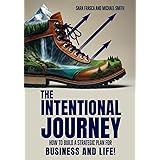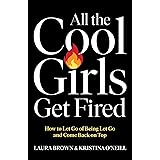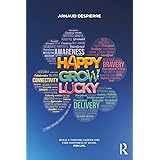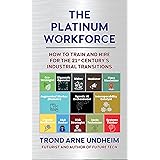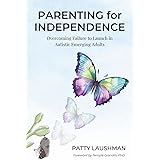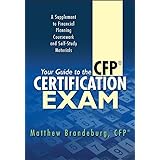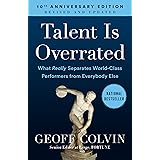Navigating the modern job market can present significant challenges for job seekers, particularly when considering the evolution of hiring practices. Reports indicate that the average corporate job opening attracts hundreds of applicants, with many resumes being screened out by automated systems before reaching a human recruiter. As effectively highlighted in the accompanying video by certified career coach Sara Camilo, the strategies for securing a new role in 2025 necessitate a departure from outdated resume practices and an embrace of contemporary trends. These essential modern resume strategies are designed to enhance visibility and impact, ensuring that your application truly stands out in a competitive landscape.
Modern Resume Strategies for Your 2025 Job Search
The journey to a successful job search in 2025 is often initiated with a meticulously crafted resume. Consequently, a deep understanding of what constitutes an effective resume in today’s digital hiring environment is paramount. The following sections elaborate on critical shifts in resume best practices, emphasizing tailored content, impactful presentation, and technological considerations.
Tailoring Your Application: A Strategic Imperative
Historically, a single, general resume might have been deemed sufficient for various job applications. This approach, however, is now widely considered inefficient. In the current job market, a general resume is frequently overlooked by both Applicant Tracking Systems (ATS) and human recruiters. Therefore, each resume submitted must be specifically tailored to the target job description.
Tailoring involves more than merely changing the job title. It necessitates the integration of specific keywords, skills, and experiences that are directly mentioned in the job posting. Imagine if a hiring manager received a resume where the very language mirrored their job description; such an application would immediately convey a strong fit. Furthermore, even the filename of your resume can be optimized, incorporating the job title and your name to reinforce this bespoke approach.
Beyond the Objective: The Power of Professional Summaries and Accomplishments
The traditional “objective” statement on a resume has largely become obsolete. Its focus on the applicant’s desires, rather than their value to the employer, renders it less effective. Instead, a powerful professional summary or an executive summary, along with three to four bulleted key accomplishments, should be positioned at the top of the resume.
These initial sections are designed to grab immediate attention, highlighting your most relevant qualifications and achievements. Accomplishments, especially when quantified, provide concrete evidence of your capabilities and impact. Consider a scenario where a recruiter, within seconds of viewing your resume, is presented with a clear demonstration of your past successes; this is significantly more compelling than a statement about what you hope to achieve. This approach allows your value proposition to be immediately recognized, ensuring that crucial information is not overlooked.
Navigating Privacy and Professionalism: What to Include (and Exclude)
The inclusion of one’s full street address on a resume is another practice that has been phased out. In an era where personal information is increasingly vulnerable, privacy considerations dictate a more minimalist approach. Consequently, only your city and state are typically required, offering sufficient geographic context without compromising personal details.
Moreover, the phrase “references available upon request” is no longer standard practice. The process for providing references has evolved significantly, typically occurring electronically and much later in the hiring cycle, often closer to the offer stage. Its presence on a resume is therefore superfluous and can be safely omitted. When the time comes, a dedicated list of references will be requested separately by the employer.
From Responsibilities to Results: Showcasing Your Impact
A common pitfall in resume writing is merely listing job responsibilities, often beginning with phrases like “responsible for.” While these outline duties, they fail to demonstrate impact or achievement. Therefore, such responsibility-focused bullet points should be replaced with descriptions of scope, accomplishments, projects, and initiatives. Quantitative information is highly valued in this context.
Impactful contributions are best conveyed through measurable results, annual goals met or exceeded, and Key Performance Indicators (KPIs). Imagine a candidate stating they “increased sales by 15% in Q3” versus simply “managed sales accounts.” The former provides tangible evidence of value. The context of these achievements, such as the methodologies employed, can be reserved as talking points for the interview, allowing the resume to remain focused on the demonstrable outcomes you delivered for your team or company.
Strategic Experience Presentation: Curating Your Career Narrative
Including every job ever held can inadvertently dilute the focus of your resume, especially for experienced professionals. A more effective strategy involves showcasing only relevant positions from the past 10 to 15 years. This timeframe generally ensures that the skills and experiences highlighted are current and directly applicable to the roles being sought.
For those wishing to provide a broader career trajectory, an “Additional Professional Experience” section can be implemented. Situated after the primary work experience, this section may simply list previous employers and job titles without detailed dates or descriptions if the roles are considerably older. This method effectively offers a glimpse into your career progression, illustrating your path to your current skill set, without overwhelming the reader with extraneous detail.
Optimizing Your Resume for Modern Recruitment
Beyond content, the presentation and underlying structure of your resume are critical for navigating the digital gatekeepers of the modern hiring process. An understanding of these elements can significantly improve the chances of your resume being noticed and acted upon.
The Evolving Landscape of Resume Length and Format
The long-standing notion that a resume must be confined to a single page is increasingly outdated, particularly for professionals with a decade or more of experience. Currently, a two-page resume is frequently accepted as the norm. This expanded length allows for a more comprehensive articulation of achievements and relevant experience, especially when dealing with a rich professional history. Nevertheless, conciseness remains paramount; every bullet point should be impactful, focusing strictly on accomplishments and quantifiable results.
Regarding format, a single-column layout is widely recommended. While visually appealing multi-column or shaded designs are prevalent online, many Applicant Tracking Systems (ATS) struggle to parse these complex formats effectively. Consequently, critical information can be misinterpreted or omitted, hindering your application. A clean, single-column design ensures optimal ATS compatibility. To prevent a “boring” appearance, subtle use of colored fonts or strategic shading can be incorporated, maintaining professionalism while adding visual interest.
The Digital Discovery Pathway: Beyond Traditional Applications
The recruitment process has fundamentally transformed. Simply applying for a job and waiting for a call is often insufficient. Increasingly, candidates are identified through platforms like LinkedIn or via professional referrals before a resume is even requested. Therefore, an optimized LinkedIn profile is an indispensable component of your job search strategy, acting as an extension of your resume. Recruiters frequently consult a candidate’s LinkedIn “About” section and other profile details to gain a deeper understanding of their background and personality, beyond what is presented in the formal resume. The synergy between your resume and your online professional presence is therefore crucial, creating a cohesive and comprehensive professional narrative.
Crafting Your Message: Professional yet Conversational Language
While professionalism remains a cornerstone of resume writing, the tone of language has evolved. A purely formal, stiff tone is being replaced by a style that is professional yet conversational and engaging. This shift aims to make your resume more authentic and relatable, allowing your personality and enthusiasm to subtly shine through.
For instance, terms like “technical skills” can be modernized to “tech stack,” conveying a more contemporary and approachable tone. An engaging tone is often preferred as it can make a resume more memorable and personable, fostering a connection with the reader. This balance ensures that while your expertise is clearly communicated, it is done in a manner that is both accessible and compelling.
The AI Imperative: Understanding Applicant Tracking Systems (ATS)
The integration of Artificial Intelligence (AI) into Applicant Tracking Systems (ATS) represents a significant development in recruitment technology. These systems are designed to automate and streamline the initial screening of resumes, identifying keywords and phrases that align with job descriptions. As AI capabilities continue to advance throughout 2025 and beyond, understanding how ATS functions will become even more critical for job seekers.
Resumes are frequently screened by ATS to rank candidates based on keyword relevance and formatting. Therefore, keyword optimization and clear, straightforward formatting are not merely suggestions but necessities. Resumes must be structured in a way that is easily parsable by these algorithms, often favoring standard fonts, clear headings, and minimal graphical elements. Failing to optimize for ATS can mean an otherwise strong candidate’s resume is never seen by a human recruiter.
In conclusion, the landscape of the job search in 2025 demands adaptability and an informed approach to resume writing. By adopting these modern resume tips and trends, job seekers can significantly enhance their visibility, articulate their value more effectively, and ultimately improve their prospects for securing a desirable position. Staying current with these evolving strategies is not merely advantageous; it is essential for navigating today’s dynamic job market successfully.


